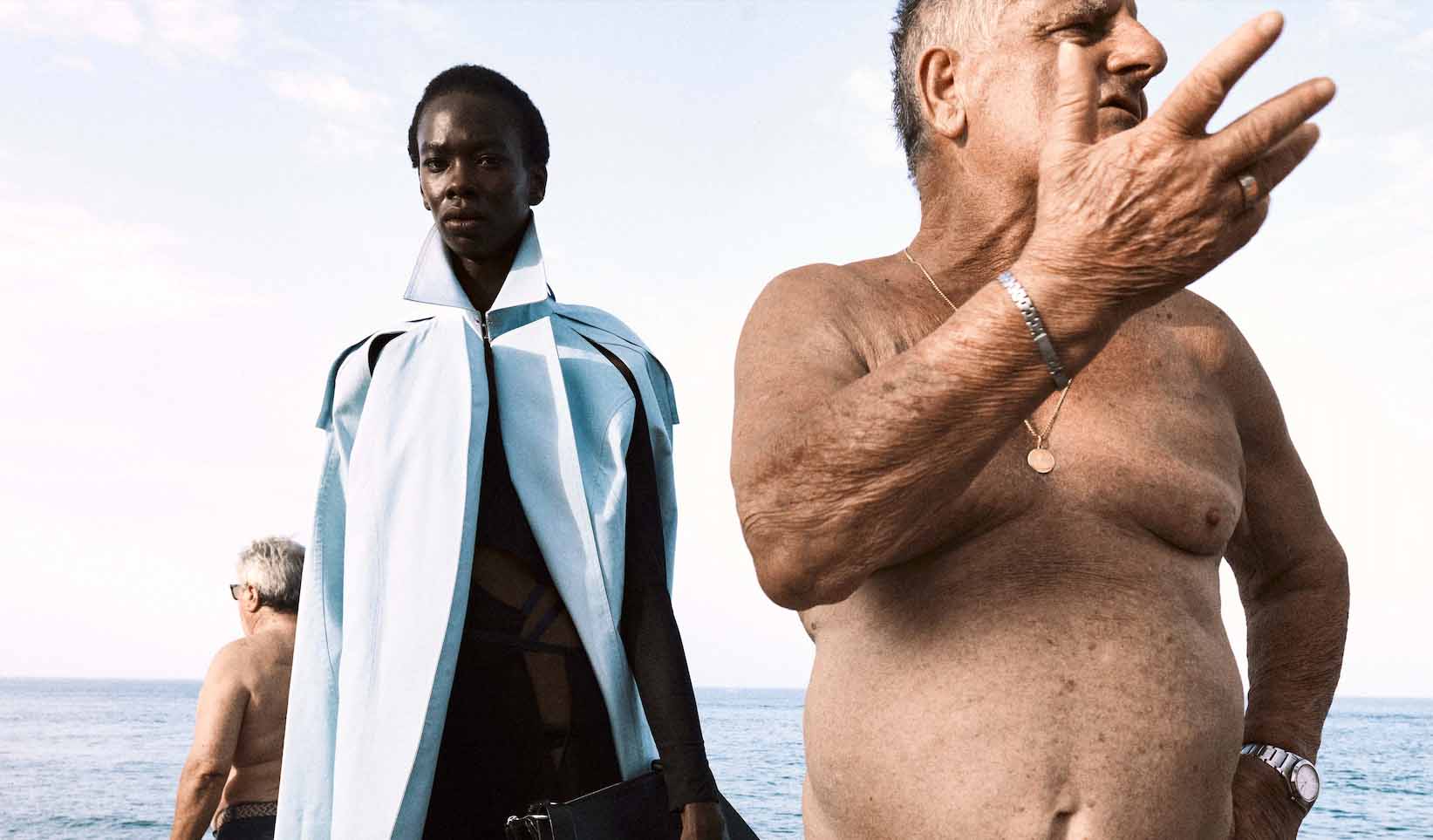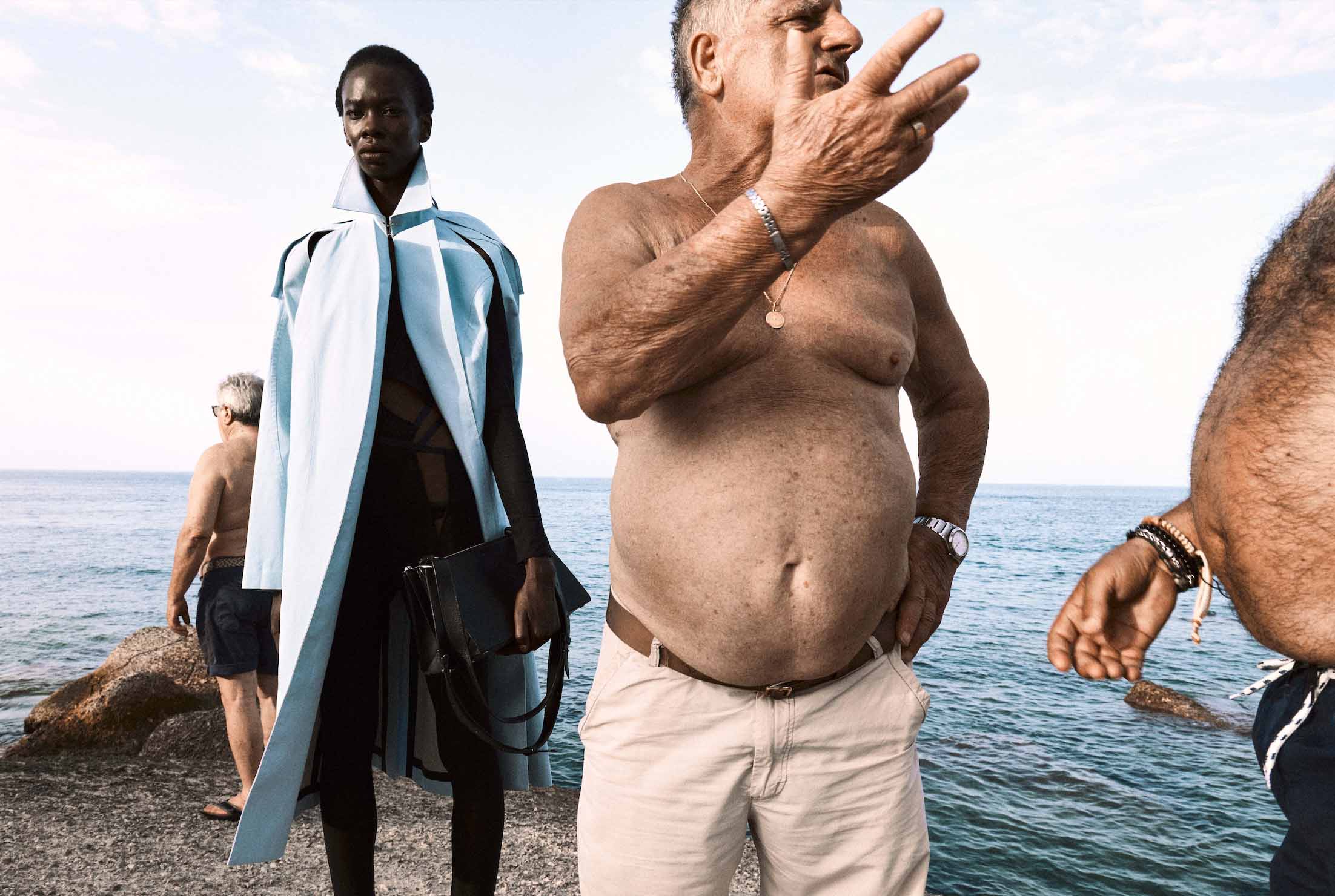Boyarovskaya’s Sensual Serenity

Deconstructed, minimalistic, simple: the trinity of descriptors Maria Boyarovskaya and Artem Kononenko, co-founders of Boyarovskaya, ascribe to their six-year-old brand. The eponymous Boyarovskaya comes from a design background with stints at Givenchy as a junior designer and John Galliano, while Kononenko focus is photography. Together, they exchange and scrutinise aesthetic values when undertaking the research for a new collection. This is true for Spring-Summer 2023, which expands on the brand’s modern, deconstructed tailoring. Consider faux-leather Y-neck dresses, skin-tight basics like stretch tops and leather skirts with sensual slashes, wool high-neck dresses, elegant swimsuits with midriff-baring cutouts (some of which are paired with denim) and some dashing examples of tailoring.
A trip to Sicily informed the fabrication: with more deadstock fabrics entering the fold, a defected leather taken from a Sicilian drum maker takes the shape of a reversible deconstructed trench coat. Elsewhere, an attentiveness to conscious fabric choices is achieved through the use of recycled cotton, mohair, and wool. A film, which is displayed alongside the collection at Galerie Cinéma in the Marais, is accompanied by a lookbook photographed by Kononenko in Sicily. Lithe models are captured amongst local scenography – rocky shores, the shimmery Mediterranean, and local fishermen Salvatore, Ciccio, Pascal, Cina, Carmello. The simplicity of the collection conveys the serenity of a seaside summer, spent passively whiling away days until understated yet sexy evening attire beckons at dusk.
“I like to discover new cultures, and get to know them better, and make unusual encounters,” Boyarovskaya said over Zoom from her Paris studio.
Would you consider yourself an explorer?
Yes, we explore by travelling mostly. When we work together, we talk a lot – me, as a designer, and Artem, as a photographer, share our vision with each other, which then becomes the collection we want to create.
Is exploration something that comes naturally to you?
Sometimes yes, but sometimes no. If we’re working on a new collection, I like to carry out a lot of research and sometimes it can be unexpected; I might find a picture of something that doesn’t show you exactly the clothes but it reminds me of some lines. I’m fascinated by lines and silhouettes, and I can just see how to fit them into my collections. I like to choose a place – it can be my studio, it can be an exhibition, it can be a location. Lately, I was lucky enough to work next to the sea in Sicily, a very calm place, where I could watch the local people live their simple life. [This collection] explores the simplicity of the theme and, in the end, we can create clothes for the people. For me, it’s very interesting to understand them more.
What silhouettes and fabrics are you working with this season?
Usually, we try to find very unusual and sustainable fabrics. When we travelled to Sicily, we found a tiny store in one city, where there is a guy who is the only one still producing Tamburo Siciliano, a type of musical drum instrument. He is the only one who makes it in the old handcrafted way using old technologies. This instrument is made with a specific transparent leather. Unfortunately, lots of the skins cannot be used for the production because they have a defect, because it’s a huge instrument that needs a huge skin. Some of them are damaged or old, so they just throw them away. So after that, we proposed to collaborate in a way we can use the defect skins for our collection. We also use recycled cotton, viscose, mohair, wool, and faux leather.
Do you think exploration is a foundation of creativity?
I like to discover new cultures, get to know them better, and make unusual encounters. And then it goes to the feelings. So I will say this collection was informed by that. The more I explore, the more that I’m challenged, and that stimulates me. I think we definitely need to explore through travelling or watching movies – whatever can inspire you. Because if we don’t, I guess at some point we just get stuck. Everyone is different but that’s me personally.
How would you describe the collaborative process?
Usually, when I create, I’m designing alone and then I’m showing Artem the designs after. We speak about what I’ve created, and he gives me some advice on this. Then we try to understand the idea that we want to bring to each design and how we feel when we’re making the shoot, so communication brings the final result. He has a vision as a photographer about things like the location and how we’re going to shoot it. That, for us, is very important, too.
This interview has been lightly edited for clarity.




